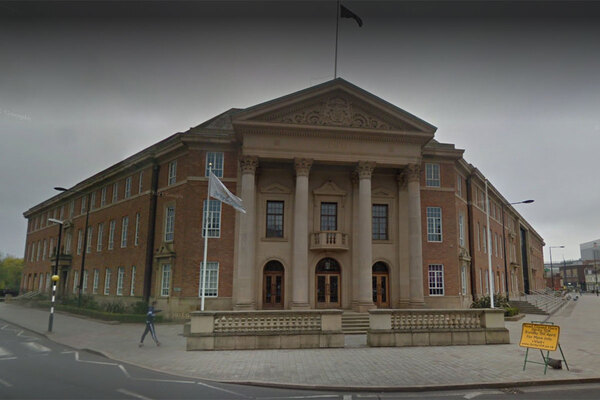Fire fight
Landlords should fit sprinklers in all their homes, argues Bill Randall. Doing so would save money in the long term and, more importantly, tenants’ lives
Here’s a tale of two fires. In 2009 one man died and two others were treated in hospital after a fire on the fifth floor of a multi-storey block of flats in the Gorbals district of Glasgow. Just 18 residents were able to return to the block that day. Of their neighbours, 10 were in temporary accommodation for 10 weeks, six for six months and three for 11 months. Decanting them, the cost of refurbishment and the loss of rent cost landlord Glasgow Housing Association a total of £2.6 million [according to figures from the British Automatic Fire Sprinkler Association]. The block was not fitted with sprinklers.
Two years earlier a chip fan fire broke out in a Northampton Council block that was fitted with sprinklers, which doused the flames. No lives were lost, the fire did not spread and the refurbishment of the flat cost just £850.
Campaign
The contrast in the Glasgow and Northampton fire outcomes supports the case made by the Chief Fire Officers Association and others for sprinklers to be fitted in all new build homes, in all tower blocks (currently they are required only in blocks more than 30 metres high in England) and all care homes.
Having sprinklers fitted is like having a firefighter in every room, the CFOA argues, virtually eliminating fire deaths, reducing injuries by at least 80 per cent and reducing property damage by 90 per cent.
More evidence from Scotland supports the CFOA’s case. Since sprinklers were retrofitted in three multi-storey blocks in Ayrshire about a decade ago there have been two serious fires in the blocks. On both occasions the sprinklers acted swiftly and effectively to ensure there was no loss of life, no injuries and minimal fire damage.
Counting the costs
Cost, of course, is a major consideration in all of this. Sheffield Council fitted sprinklers in a tower block in a pilot scheme that gives some idea of the cost. The work was completed in four weeks during August and September 2011 without moving the tenants out. It cost around £55,000, or about £1,150 for each flat. The total annual maintenance cost for the sprinklers is around £250. All the controls and valves are in common areas of the block and maintenance work can be carried out without the need to enter the flats and disturb the tenants.
The cost of fitting sprinklers in new homes is put at less than 1 per cent of building costs by the CFOA.
It’s not a high price to pay for the personal safety of the tenants, particularly when it is considered alongside the cost of the Lakanal House fire in London in 2009 in which six people perished. The cost of the blaze to Southwark Council by May this year was £8.2 million. The cost to the families of those who died is incalculable.
The Welsh Government has bitten the bullet on the issue. New legislation will require the provision of sprinklers in all new homes in Wales when it comes into force in September 2013. It will apply to all new build homes and those fashioned from conversions. Some progress has been made in Scotland where sprinklers are now required in all new and refurbished care homes and in tower blocks more than 18 metres high.
In England fire authorities impatient with successive governments dragging their feet on the issue of sprinklers are taking action to deal with high-risk homes first by fitting sprinklers in the flats and houses of vulnerable people.
Humberside Fire and Rescue Service is among their number, and is carrying out the programme through a public/private partnership.
The campaign to have sprinklers fitted in all new homes must go on. In 2011/12, 197 people died in 32,845 accidental domestic fires in England and Wales and a further 6,751 were injured. Scotland’s rate of house fires and deaths is almost twice as high, with about 40 per cent of homes in Glasgow, for example, falling into the high-risk category.
Over the next 25 years based on an extrapolation of 2010/11 statistics, another 8,000 people in the UK will lose their lives in fires and 185,000 will be seriously injured, according to the CFOA. It believes sprinklers should be seen as a standard safety device in the home in the same way that seat belts and airbags have become standard in cars.
People are dying needlessly and doing nothing is not an option, it says.
High-risk homes
Here’s a thought. In the UK the Lifetime Homes Standard covers 16 design principles ranging from internal doors and hallways to the potential of fitting hoists for bedrooms or bathrooms. It could be argued that fire safety and the provision of sprinklers should be included in the standard.
And here’s another thought. High-risk homes are those in which people drink heavily, smoke, cook late at night or are extremely cluttered. In these homes, the deep British love affair with chips, particularly among men living alone, can be fatal. The 35 house fires caused by chip pans every week account for about 20 per cent of the annual total. It’s time to ban chip pans without thermostatic controls which can automatically turn them off. Better still, nocturnal chefs should take the advice of the fire service and stick to oven chips and forget about chip pans altogether.
Bill Randall is a Green Party councillor, mayor of Brighton & Hove Council and a housing journalist







